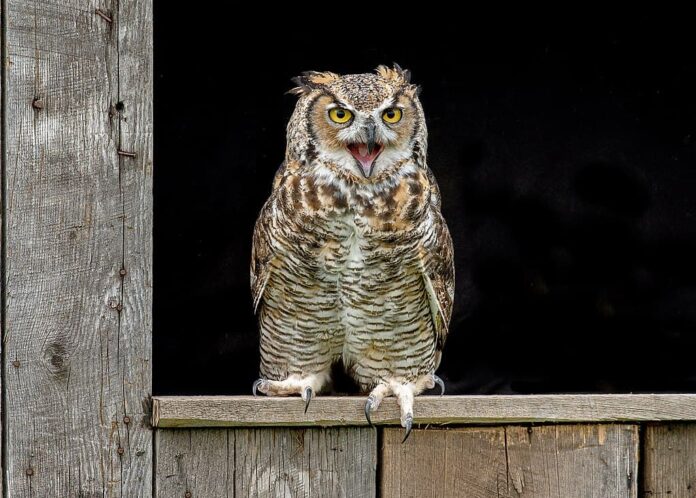Crepuscular owls are not so common because most of them are very active at night. The unique thing about them is that crepuscular owls are active during dusk and dawn. During this twilight period, those carnivorous owls spend their waking time hunting for food in their habitats.
1Barn Owl
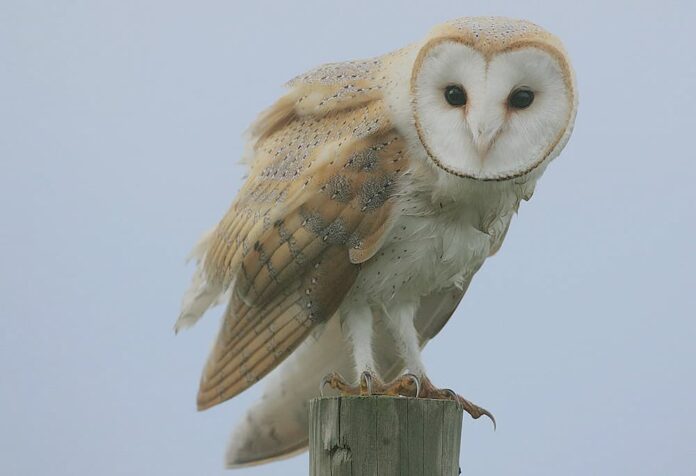
With a white chest and white heart-shaped face, barn owls are one adorable species that is very common as pets. The special thing about barn owls is that they have a crepuscular and nocturnal lifestyle. These silent raptors are active at dawn and dusk as well as at night. When the time comes, a barn owl will patrol the edges of fields and woodlands as it flies slowly and silently. In flight, its feet are often dangling especially in the moments before it drops down onto its unsuspecting prey. Shortly before striking, it will hover a little before swooping down with precision.
Thanks to their sharp talons and hooked upper beak, hunting and eating is very easy for them. Plus with excellent hearing and lowlight vision, these hunters can locate and capture prey at night with ease. Barn owls mostly feed on small mammals like rodents, but they also eat birds, insects, and reptiles. With their large distribution range, you can find them in many places such as barns, deserted farm buildings, open fields, etc. People often hear them making a variety of hisses and screeches that sound rather unpleasant for their adorable look. Because of the sounds they make, some people also called them Screech Owls.
2Burrowing Owl
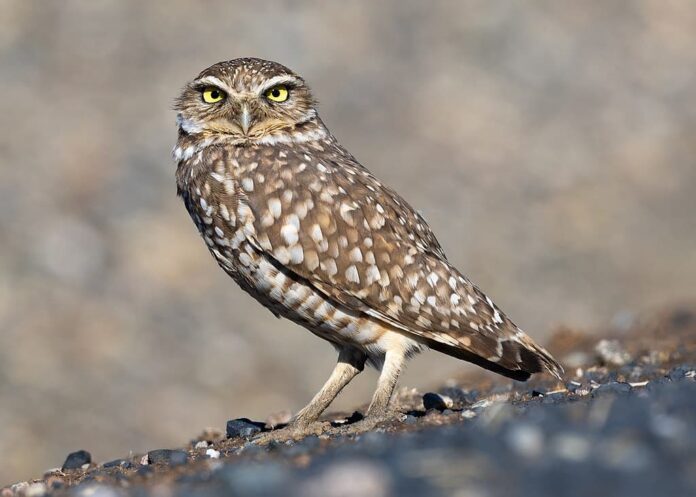
Burrowing owls are the comedic species of owls with extremely cute behavior and look that can always make us laugh. These adorable balls of fun have small brown bodies with long legs that make them quite silly when they walk. Burrowing owls are both crepuscular and diurnal, and hunt both day and night as well as dusk and dawn. Just like the name suggests, these crepuscular owls nest in an underground burrow in a loose colony of 2 to 7. The thing is that they don’t dig their own burrows, they simply take over burrows dug by armadillos, ground squirrels, skunks, etc. Once they move in, they will do some “decorating” by gathering feathers or grass to make it home.
The burrowing owls also have a wide range of habitats as you can find them throughout America. Their favorite places to live in are deserts, golf courses, grasslands, open areas, and pretty much anywhere with burrows and food. You will often see them spend their time on the ground or on low perches like fence posts. Because of their small size, they primarily feed on insects and other small mammals or reptiles that they can find. The adorable part is that they hunt by running or walking across the ground. They do fly sometimes when they want to catch insects in the air. Their population is threatened due to habitat destruction as a result of land development and pesticides.
3Eurasian Eagle Owl
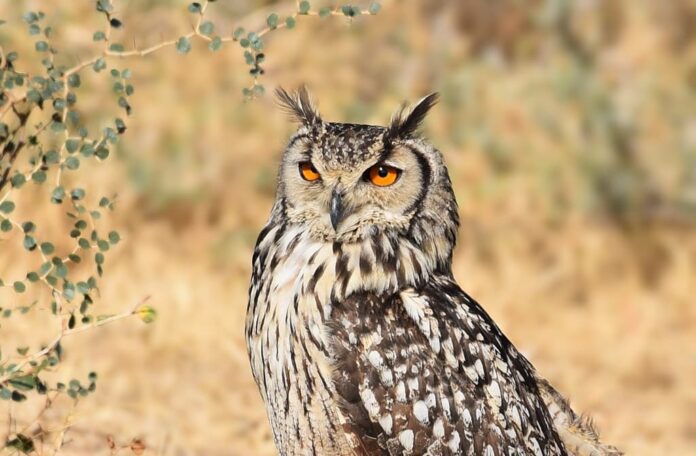
Eagle owls are probably the largest owl species in the world, with a large wingspan of over 6 feet. As you can see, there are tufts of feathers on their heads that somehow make them easy to spot. Not to be confused with other birds with similar tufts, this one has bright orange eyes. This also indicates the fact that they are crepuscular owls as well. Living in Asia and Europe, Eurasian eagle owls are monogamous, and they live together for life once they find a partner. During mating season, the male even feeds the female which is very caring and sweet.
Just like some owl species, the Eurasian eagle owls do not build their own nests. Instead, they nest in abandoned eyries, caves, and hollows of other birds of prey. Because they inhabit mostly coniferous forests, mountain regions, and other remote places, finding the perfect nest is not difficult. Sometimes they are also found in cliffs and ravines or grassland areas with alpine meadows as well. Although with different living regions, Eurasian eagle owls are closely related to the great horned owls and snowy owls. This is why people often mistake them for the great horned owls. The difference is their size as eagle owls are slightly smaller than the great horned owls.
4Great Horned Owl
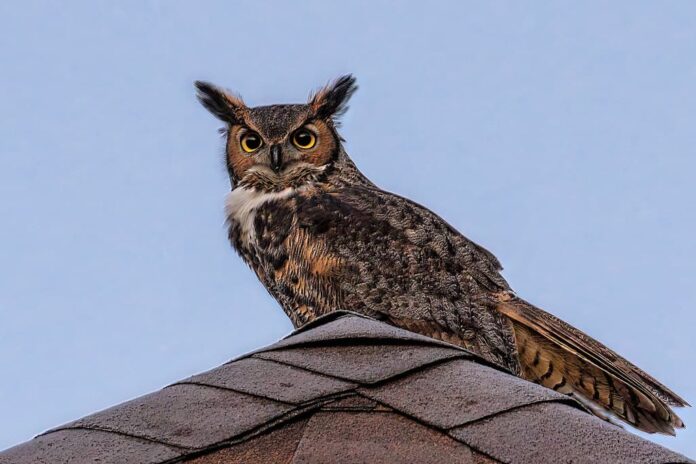
You can recognize a great horned owl easily when you see one because of its ear-like tufts on its head. This owl species is among the cutest, and it is also common to have as pets as well. The great horned owls are medium-sized with brown feathers, and they have bright yellow eyes. As crepuscular owls, they are active during dusk and dawn. However, they would come out for some midnight snacks from time to time as well. Since these carnivorous owls are large, great horned owls have a wide range of choices on their menu. From house cats and rodents to raccoons and skunks or even carrion, these ferocious hunters can eat them all.
The talons of this owl species are large and strong, helping them grab and squeeze their prey with ease. Their deadly crushing grips most often kill prey instantly the moment they swoop down and clench on one. As adaptable birds, you can find great horned owls from the Arctic to South America. They inhabit agricultural areas, forests, opening fields, rainforests, woodlots, and pretty much anywhere with food and a favorable temperature. Their population is doing okay although sometimes they are caught in barbed wire or leg hold traps, electrocuted, or hit by cars. Wonder which owl species often makes the deep “hoo-hoo” hooting? You know who now, it is the great horned owl.
5Long-Eared Owl
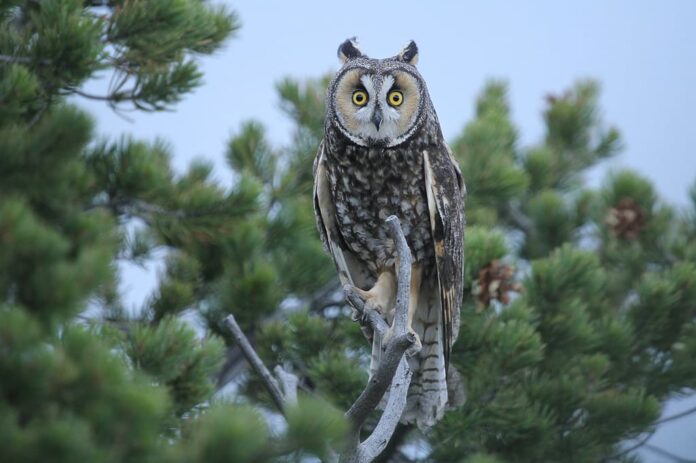
Looking similar to the great horned owls because of the ear tufts, long-eared owls are actually smaller. Their plumage has a combination of black, brown, creamy, and gray with large orange-red or yellowish-orange eyes. This species is both crepuscular and nocturnal, and they spend their daytime perching and roosting in trees. Apart from living in largely abandoned nests of other birds, long-eared owls also live in hollows on the ground sometimes. Most of the time, long-eared owls are solitary. However, they will roost in groups in forest thickets during the winter months. There are from 2 to 20 birds roosting together, and they will make barking noises when disturbed.
The unique thing about these crepuscular owls is that they are partially migratory. They only migrate in winter, leaving the northern temperate regions and moving south with the dawn of winter. This species is found in Africa, Asia, Europe, North America, and a few islands in the Atlantic Ocean. They like to live in deciduous forests, densely vegetated areas, open coniferous, thick woods, and other areas near grasslands. When hunting, they kill small mammals by biting the back of their head before swallowing the prey whole. Their population is declining due to competition for food, habitat loss, and nest predation. The good thing is that their global population remains large and stable.
6Short-Eared Owl
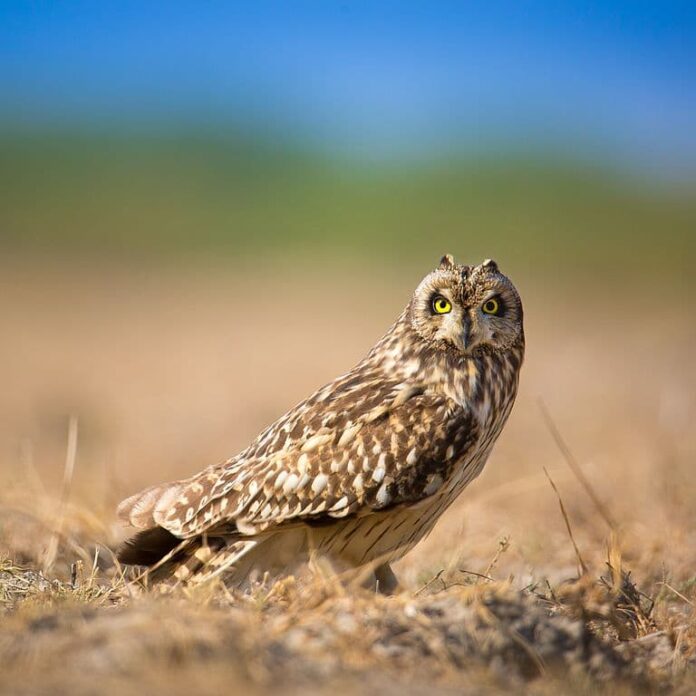
With short tufts on top of their heads, this species earn the name short-eared owls which is opposite to their closest relatives long-eared owls. These medium-sized crepuscular owls nests on the ground, and they are found on every continent except Antarctica and Australia. They inhabit open areas such as grasslands, marshes, moorlands, savannas, and tundras. At dusk, you can see them flying low off the ground searching for food. Their menu consists of bats, birds, mice, moles, rabbits, voles, weasels, and other small mammals. When the daytime roost is getting close, they often rest on fence posts.
As one of the few owls that construct their own nests, the female does a great job doing so. She picks a high place or mound and scratches out a bowl shape depression then fills it with downy feathers and grasses. Birds with nests on the ground are often at high-risk from predators like cats, dogs, foxes, etc. Short-eared owls are very caring and protective parents, and they will keep their chicks safe at all costs. One of the methods is an act called “injured bird” which the parents do to lead the intruders away from their young.
7Snowy Owl
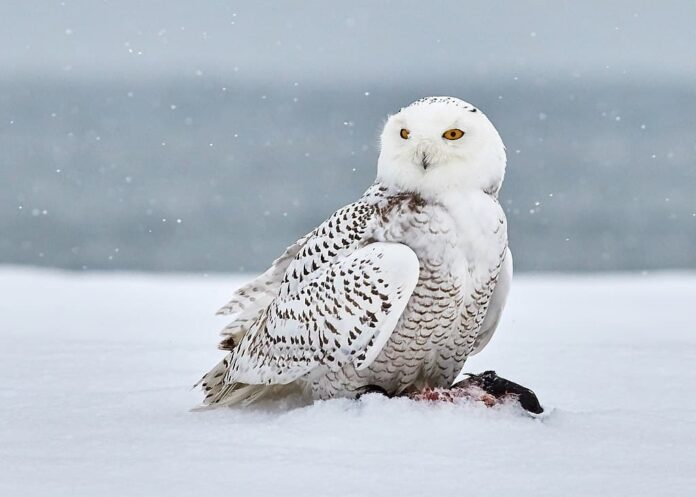
Besides being the only white owls in the world, snowy owls are also both crepuscular and diurnal. They live in the polar regions of Eurasia and North America, and they are also potential visitors during Greenland cruises. At the same time, snowy owls share their super cold habitats with many animals such as Arctic fox, Arctic hare, reindeer, polar bear, etc. As you can see, snowy owls have a lot of feathers because they need insulation from Arctic temperatures. On top of that, even their feet are covered with feathers that look like fluffy slippers. Another interesting thing about them is that they have smaller eyes compared to most owls out there.
While other owl species feed on various animals, snowy owls’ diet mainly consists of lemmings. When hunting, a snowy owl would sit and wait for the prey to come out as it perches still. With excellent hearing skills, they can even hear prey moving under the snow. Plus with their strong feet and sharp talons, one swoop is all they need to capture their prey. Snowy owls are solitary except during the breeding season when the male helps the female with nesting and chick rearing. At this time, they are also very territorial as they will aggressively chase intruders or predators that threaten their eggs away.
Fact: The Harry Potter movies were responsible for a sudden boom in the interest in snowy owls as pets. Because the birds are fierce and strong, this resulted in many snowy owls being abandoned at animal centers around the world.
Related Post: Owl Eye Colors & Their Meanings

